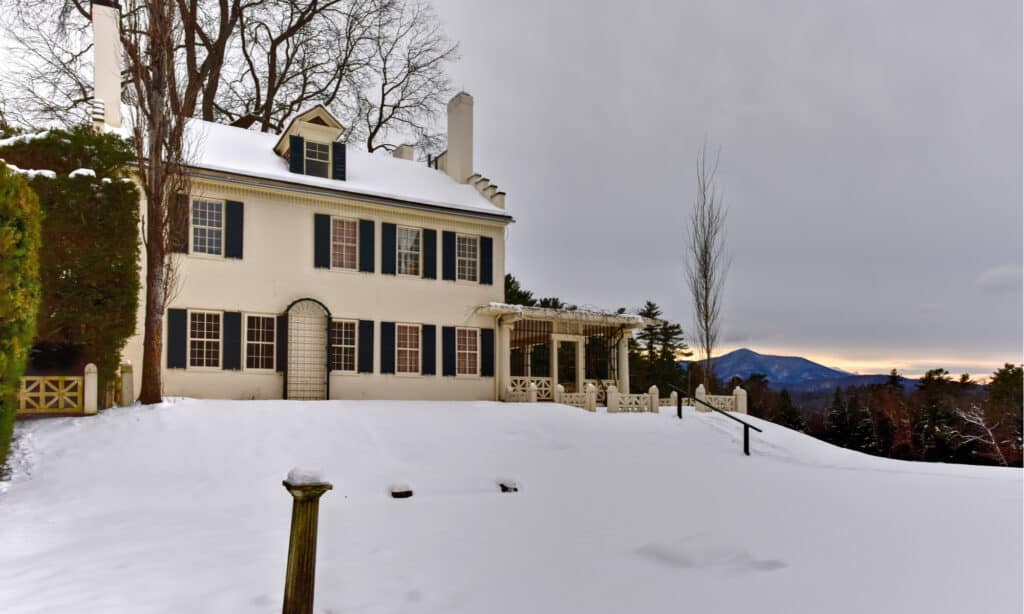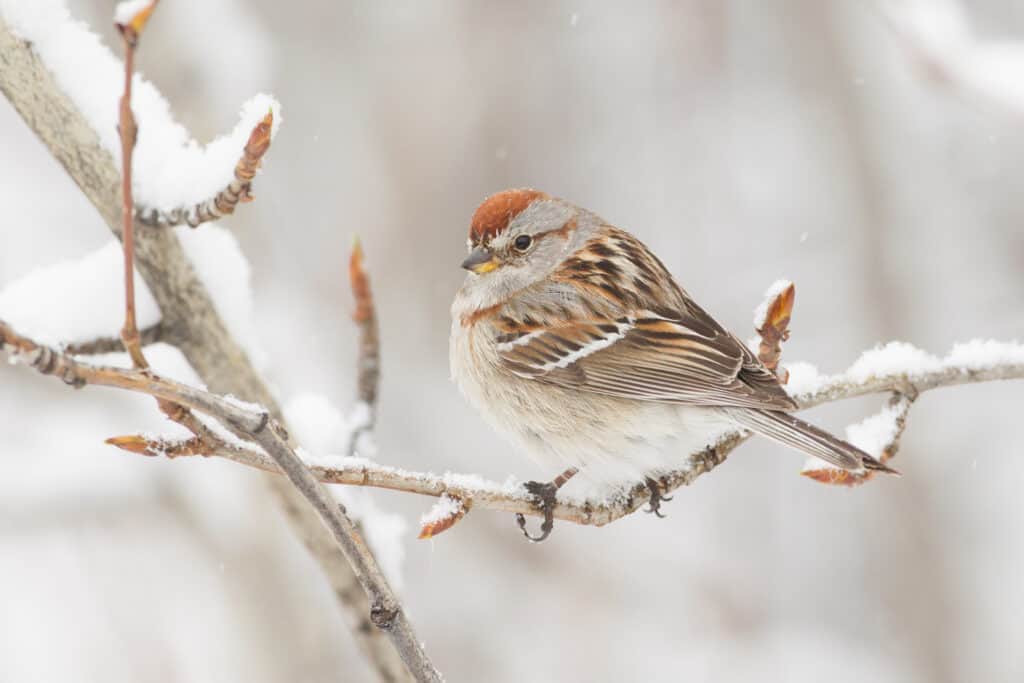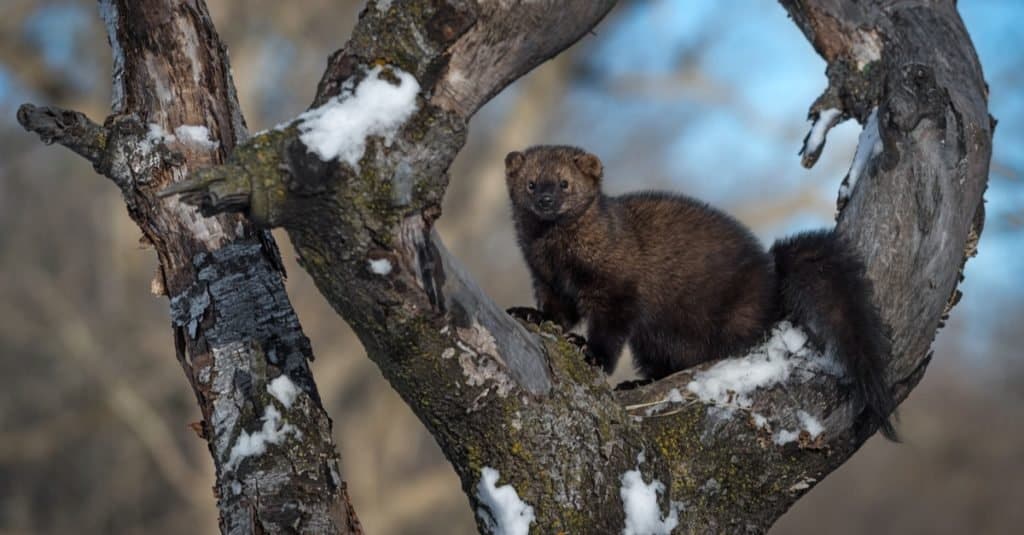Serene and untamed, you might be wondering when the first snow in New Hampshire typically occurs. This state is renowned for its recreation and outdoor activities, particularly in the wintertime. But what can you expect out of a typical New Hampshire winter and what might the average temperatures be like in this portion of the United States?
In this article, we will go over everything you need to know about snowfall and winter records in New Hampshire, including when snow typically falls. We’ll address the frigid temperatures that occur throughout the state as well as where you might go to enjoy the winter wonderland that is New Hampshire! Let’s get started.
Understanding First Snow in New Hampshire

The beginning of October is a very early time of year for snowfall to start, though New Hampshire’s average snowfall begins by the end of the month on average!
©Felix Lipov/Shutterstock.com
| New Hampshire Snow Facts | |
|---|---|
| Earliest First Snowfall | October 10 (1979) |
| Latest First Snowfall | December 20 (2015) |
| Average Temperature | 5-40 degrees Fahrenheit |
| Largest Seasonal Snowfall | 128 inches (1956-1957) |
| Smallest Seasonal Snowfall | 29 inches (2016-2017) |
| Places to Enjoy the Snow | White Mountain National Forest, Manchester, Lake Winnipesaukee |
New Hampshire is no stranger to winter weather, given the fact that the entire state averages 60-80 inches of snow annually. In addition, New Hampshire is a relatively small state all things considered, so there isn’t very much change in temperatures and weather conditions. However, the highest peak in New Hampshire regularly sees freezing temperatures throughout the year, even during the summertime!
But when does snow start falling in New Hampshire, and how much snow does the state get on average? Let’s take a closer look at the figures.
Earliest and Latest Snowfalls in New Hampshire
There are a number of mixed records that suggest when the earliest first snowfall happened in the state of New Hampshire. Some existing records for the 2022 winter season show snowfall happening as early as September 23rd. However, the earliest first noticeable snowfall and accumulation in New Hampshire’s history occurred on October 10th, 1979. The beginning of October is a very early time of year for snowfall to start. Though New Hampshire’s average snowfall begins by the end of the month on average!
The statistics for the latest first snowfall in the state of New Hampshire are a bit more extreme, especially when you consider that the states remain snowy for much of October and November. However, December 20th, 2015 holds the record for the latest first snowfall in the state of New Hampshire. Given the fact that snow typically begins in earnest during the months of November, having no snow until the end of December is unheard of!
Largest and Smallest Snowfalls in New Hampshire

December 20th, 2015 holds the record for the latest first snowfall in the state of New Hampshire.
©Jukka Jantunen/Shutterstock.com
When it comes to some of the largest and smallest snowfall records in the state of New Hampshire, it’s important to mention Mount Washington. Located in the White Mountain National Forest, Mount Washington sees extreme temperatures and winter weather conditions for most of the year. In fact, the first snow in the fall in New Hampshire likely occurred on Mount Washington, and even as early as the beginning of September!
However, given the fact that this peak is nearly 7,000 feet in elevation and receives anywhere from 20 to 50 inches of snow in a single day, let’s take a look at some snowfall levels in other locations of New Hampshire.
In the winter season of 1956, New Hampshire saw almost 130 inches of snow over the wintertime. By direct contrast, the 2016 winter season only saw 30 inches of snow or less. This is still more than the United States average but far lower than the average for New Hampshire!
Winter Temperatures in New Hampshire
Winter temperatures do not vary much across the state of New Hampshire, at least until you get into the northernmost regions. For example, the city of Berlin, located just north of the White Mountain National Forest, averages at least 10 degrees cooler than the rest of the state. It is one of the coldest locations in New Hampshire, averaging anywhere from 5 to 25 degrees Fahrenheit during the wintertime.
However, there are some more mild locations located in New Hampshire, likely along the southern coast and toward the state of Massachusetts. As you head south, New Hampshire averages anywhere from 25 to 40 degrees Fahrenheit. While you’ll still experience plenty of snow and icy conditions, the weather might be a bit more manageable depending on the year!
Winter Wildlife in New Hampshire

In the winter season of 1956, New Hampshire saw almost 130 inches of snow over the wintertime.
©Holly Kuchera/Shutterstock.com
One of the primary reasons that people choose to visit New Hampshire is to experience its natural beauty and recreational areas. There are plenty of state and national parks and forests to explore, giving you plenty of opportunities to view wildlife during the wintertime. Here are some of the animals that you may catch a glimpse of:
- Opossums
- Beavers
- Fishers
- Wolves
- Black bears
- Moose
- White-tailed deer
- Raccoons
- Foxes
- Wild turkeys
Up Next
- First Snow in North Dakota: The Earliest & Latest First Snows on Record
- First Snow in West Virginia: The Earliest & Latest First Snows on Record
- First Snow in Vermont: The Earliest & Latest First Snows on Record
The photo featured at the top of this post is © iStock.com/Herman Vlad
Sources
- Evidence of climate change declines with elevation based on temperature and snow records from 1930s to 2006 on Mount Washington, New Hampshire, USA, Available here: https://www.tandfonline.com/doi/abs/10.1657/1938-4246-41.3.362
Thank you for reading! Have some feedback for us? Contact the AZ Animals editorial team.






